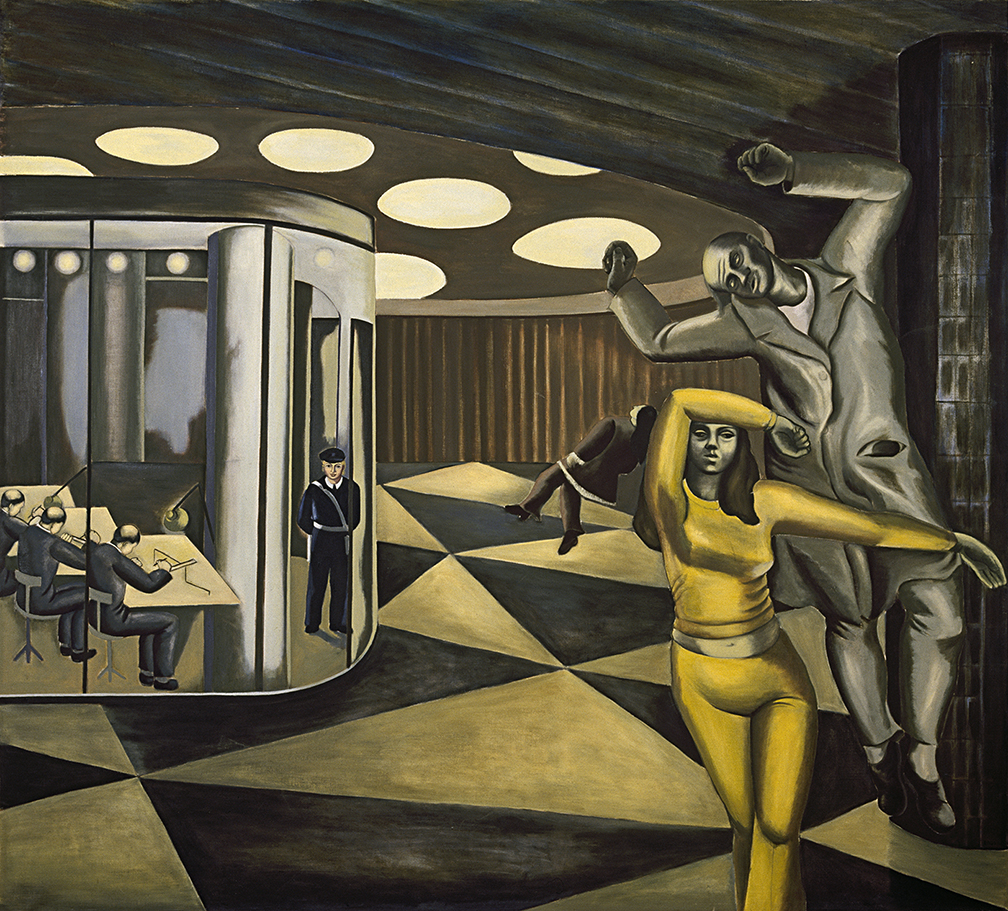Birgit Stahl-Nyberg
Framtiden på väg (The future on route)
17 March - 19 August 2018
Uppsala Art Museum wants to present Birgit Ståhl-Nyberg’s (1928 – 1982) art, which with strength and dedication took a stand for art’s place in society. With an unwavering belief in art’s ability to change and create awareness, Birgit Ståhl-Nyberg was an artist who always wanted to make a difference. Art was supposed to depict people’s relationships with each other here and now. Her interpretations of the time she lived in pose questions about our time.
In the Framtiden på väg (The future on route) exhibition, the best of Birgit Ståhl-Nyberg’s work from the 1960s and 70s is presented. Birgit Ståhl-Nyberg’s art was characterised by social criticism and a belief in art as a force in society. For her, the artist was a conveyor, someone who could visualise and change. Images should provide strength and power for change, and to succeed in this, you had to know about the world and the imagery. With the help of composition and perspective, Birgit Ståhl-Nyberg underlined the content of the picture.
In the world of Birgit Ståhl-Nyberg, the viewer encounters everyday people and their everyday lives in post-war Stockholm. Ståhl-Nyberg’s paintings are impressive, with references to cubism and French painter Fernand Léger, who was one of her main role models, for instance. She was a sharp observer, and drew the world she lived in. She depicted the currents of people moving south from the countryside to the industries and suburbs of the cities. In her images, Birgit Ståhl-Nyberg depicts people’s lives in detail, and from a social perspective. She painted underground commuters, the pulsating life of the city, and the conformity of the suburb. Her pictures were critical and passionate contributions to the discussion about cities and their people.
Birgit Ståhl-Nyberg grew up in Hammerdal, a Jämtland village, during the early stages of the labour movement. Apart from city motifs, Ståhl-Nyberg also painted her village. Each house, each place had a story that was significant to the artist. The anonymous and noisy city with people constantly on the move is far away. In Hammerdal, calm and silence prevail.
One of Birgit Ståhl-Nyberg’s big artistic commissions was the Akalla underground station in 1977. There is a wealth of sketch material from this working process, which Uppsala Art Museum can exhibit for a few weeks, from the 17th of March to the 15th of April 2018.
The underground station in Akalla is an example of one of Ståhl-Nyberg’s recurring themes: the relationship between woman and man, and their standing in society. Titles such as Medmänniskor (Fellow Humans), Kvinnans ideal och verklighet (Woman’s Ideal and Reality), and Mannens vardag (Man’s Everyday Life) show the artist’s desire to make the viewer aware of society’s norms and ideals through art. With poetic realism, and without being patronising, she gave the viewer room to experience and interpret.
Birgit Ståhl-Nyberg decided to become an artist early on. She was accepted to Otte Skölds målarskola (Otte Sköld’s School of Painting), and continued her studies for Lennart Rodhe at Académie Libre in Stockholm 1951 – 1952. In 1952, she was accepted to the Royal Institute of Art’s school of painting, where she was taught by Ragnar Sandberg. During her studies, Ståhl-Nyberg was influenced by classic painting. Painters that she studied and was inspired by include Fernand Léger, Henri Rousseau and Diego Rivera. In 1971, she began teaching at the University of Arts, Crafts and Design’s course for drawing teachers.
Her paintings are documents of a time in Sweden when authorities were questioned and challenged, in the world of art too. Everyday life, with the human centre stage, was given space, the artist was in the middle of societal debate, and gathered strength from people’s movements. Culture became a counter-movement against commercialism.
Curators: Ann-Christine Fogelberg and Åsa Thörnlund

